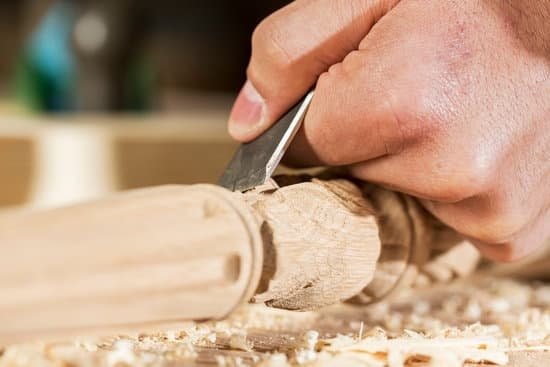Should I buy a router or a lathe for woodworking? When it comes to woodworking, choosing the right tools is crucial for achieving the desired results. Whether you’re a beginner or an experienced woodworker, understanding the differences and uses of a router and a lathe can help you make an informed decision on which tool to invest in for your projects.
Woodworking involves various techniques and processes, and having the right tools at your disposal can make all the difference in the quality of your work. In this article, we will explore the uses of both routers and lathes in woodworking, as well as their pros and cons. We will also discuss factors to consider when deciding between the two tools, and provide real-life case studies to illustrate successful woodworking projects using both a router and a lathe.
By gaining a deeper understanding of these tools and their applications, you’ll be better equipped to determine whether a router or a lathe is the best choice for your specific woodworking needs. So let’s delve into the world of woodworking tools and explore the factors that should influence your decision-making process.
What Is a Router and Its Uses in Woodworking
A router is a versatile power tool used in woodworking to hollow out an area in the face of a piece of wood. It can also be used to create smooth and precise edges, as well as to create intricate designs and shapes. Routers come in different types, such as fixed base routers and plunge routers, each with its own set of advantages and uses.
One of the main uses of a router in woodworking is for edge shaping. By using different router bits, woodworkers can create decorative edges on furniture, cabinets, and other wooden pieces. Routers are also commonly used for joinery, allowing woodworkers to connect pieces of wood together securely and seamlessly. Additionally, routers can be used for dadoing, creating rabbets, and making mortises.
When considering whether to buy a router or a lathe for woodworking, it’s important to take into account the specific tasks you need to accomplish. If you frequently work on projects that require precise edge shaping or joinery work, a router would be an essential tool for your workshop.
| Advantages | Disadvantages |
|---|---|
| Versatile – can be used for edge shaping, joining, and detailing | Requires some skill and practice to use effectively |
| Precision – allows for accurate cuts and designs | Limited to certain types of woodworking tasks |
In addition to its versatility and precision, routers are relatively compact tools that can easily be stored in a small workshop or garage. They are also more affordable compared to larger woodworking machinery such as lathes. Ultimately, the decision between buying a router or a lathe should be based on the specific woodworking projects you plan to undertake and the features that are most important to you as a woodworker.
What Is a Lathe and Its Uses in Woodworking
A lathe is a woodworking tool that rotates a piece of wood on its axis, allowing the woodworker to shape it using various cutting tools. The lathe can be used to create a wide variety of turned wood items such as table legs, spindles, bowls, and even intricate decorative pieces. It is an essential tool for crafting rounded or curved shapes and adding intricate details to wooden pieces.
Uses in Woodworking
One of the main uses of a lathe in woodworking is for creating symmetrical and smooth curves on wood. Woodworkers often use the lathe to turn square or rectangular blocks of wood into cylindrical shapes by removing material with chisels or gouges. This allows them to create beautifully shaped objects that are uniform in diameter along their length.
Another common use for the lathe in woodworking is for adding decorative details to wooden pieces. The rotating motion of the lathe allows for precise carving and shaping, making it possible to create intricate patterns and textures on the surface of turned wood items. This makes the lathe a valuable tool for creating unique and visually appealing wooden designs.
Should I Buy a Router or a Lathe for Woodworking?
When deciding whether to purchase a router or a lathe for woodworking, it ultimately depends on the specific type of projects you plan on working on. If your woodworking projects involve creating complex curved designs and symmetrical shapes, then investing in a lathe would be beneficial.
However, if your focus is more on creating detailed edges, cuts, and patterns on flat surfaces, then a router might be the better option for your woodworking needs. Ultimately, understanding your project requirements and matching them with the capabilities of both tools will help you make an informed decision about which tool would be best suited for your woodworking endeavors.
Pros and Cons of Using a Router for Woodworking
When it comes to woodworking, the decision of whether to buy a router or a lathe can be a difficult one. In this section, we will explore the pros and cons of using a router for woodworking to help you make an informed decision.
A router is a versatile tool that can be used for a variety of woodworking tasks such as shaping edges, cutting grooves, and making decorative designs. One of the main advantages of using a router is its precision and ability to create intricate details. It is also relatively easy to control and can be used on various types of wood.
However, there are some downsides to using a router for woodworking. Routers can be quite noisy and produce a lot of dust, so proper safety equipment should always be worn when using them. Additionally, some woodworking tasks may require different types of bits and accessories, which can add to the overall cost of owning a router.
In summary, while routers are incredibly versatile tools that can achieve precise and detailed woodworking tasks, they do come with some drawbacks such as noise production and additional costs for accessories. When deciding whether to buy a router or a lathe for woodworking, it ultimately depends on the specific projects you plan to work on and your individual preferences.
| Pros | Cons |
|---|---|
| Versatile – Can perform many tasks | Noisy and produces dust |
| Precision – Can create intricate details | Additional cost for accessories |
Pros and Cons of Using a Lathe for Woodworking
Using a lathe for woodworking can open up a whole new world of possibilities for creating intricate and unique wooden pieces. However, like any tool, there are both pros and cons to using a lathe in your woodworking projects.
Pros of Using a Lathe
One of the biggest advantages of using a lathe for woodworking is the ability to create symmetrical and precisely shaped objects. This is especially useful for making items such as table legs, bowls, and spindles. The lathe allows woodworkers to easily shape and carve wood into smooth and uniform designs.
Another benefit of using a lathe is the versatility it offers. With the right attachments and techniques, woodturners can create everything from delicate ornaments to large furniture pieces on a lathe. This flexibility makes it a valuable addition to any woodworking shop.
Cons of Using a Lathe
While the lathe’s ability to create symmetrical shapes is undoubtedly an advantage, it can also be limiting in terms of design. The nature of turning wood on a lathe means that certain designs may be more challenging or even impossible to achieve.
Additionally, compared to other woodworking tools such as routers, lathes generally require more space and investment. They often come with higher price tags and take up more room in the workshop, which can be a drawback for woodworkers with limited space or budget constraints.
Factors to Consider When Choosing Between a Router and a Lathe
When deciding whether to buy a router or a lathe for woodworking, there are several factors to consider that can help you make the right choice for your specific needs. Here are some important considerations:
- Project Type: Consider the type of woodworking projects you typically work on. If you primarily engage in intricate detailing, such as creating decorative edges or joints, a router would be more suitable. On the other hand, if you are more interested in turning wood to create smooth, rounded shapes like table legs or bowls, then a lathe may be the better option.
- Space and Budget: Evaluate the amount of space you have available in your workshop and your budget for tools. Routers generally require less space and can be more affordable than lathes, making them a practical choice for those with limited resources or working in smaller areas.
- Experience Level: Consider your level of experience with woodworking tools. Routers are generally considered more versatile and beginner-friendly, while lathes require a higher skill level and understanding of woodturning techniques.
Ultimately, the decision between buying a router or a lathe for woodworking comes down to your unique preferences and requirements as a woodworker. It’s important to carefully assess these factors before making a purchase to ensure that you select the tool that aligns best with your woodworking goals.
Case Studies
When it comes to woodworking, the choice between purchasing a router or a lathe can be quite challenging. Both tools have their own unique uses and advantages, and making the decision ultimately depends on the specific projects you plan to work on. To help you better understand the potential of each tool, let’s take a look at some examples of successful woodworking projects using both a router and a lathe.
One common use of a router in woodworking is for creating intricate designs and patterns on wood surfaces. For example, many woodworkers use routers to carve out decorative edges on furniture or to create detailed inlays on tabletops. Additionally, routers are often used for making mortises and tenons, as well as for shaping and trimming wood pieces with precision.
On the other hand, lathes are commonly used for turning wooden objects such as table legs, chair spindles, bowls, and even baseball bats. With a lathe, woodworkers can easily shape symmetrical round or cylindrical objects by rotating them against cutting tools. This allows for the creation of stunning pieces with smooth curves and elegant profiles.
Conclusion
In conclusion, the decision to buy a router or a lathe for woodworking ultimately depends on the specific needs and preferences of the woodworker. Both tools have their unique uses and advantages, and it’s important to carefully consider factors such as project requirements, budget, available space, and personal skill level before making a decision.
For woodworkers who prioritize versatility and precision, investing in a high-quality router may be the best choice. Routers can handle a wide range of tasks, from cutting and shaping to joinery and decorative details. Additionally, with the right accessories, routers can replicate the functions of other tools such as jointers and shapers, making them a valuable addition to any woodworking shop.
On the other hand, woodturning enthusiasts or those focused on creating round or cylindrical objects such as table legs or bowls may find that a lathe is an indispensable tool. With its ability to shape wood by rotating it along its axis, a lathe offers unique capabilities for producing symmetrical and intricate designs that may be challenging to achieve with other tools.
Ultimately, the decision between buying a router or a lathe for woodworking is not about one being better than the other but rather about understanding their individual strengths and how they align with your woodworking goals. By carefully considering your specific needs and priorities as well as conducting thorough research on each tool’s capabilities, you can make an informed decision that will support your woodworking endeavors for years to come.
Frequently Asked Questions
What Is the Difference Between a Lathe and a Mill?
The main difference between a lathe and a mill is the type of operation they are designed for. A lathe is used to rotate the workpiece against cutting tools, while a mill holds the workpiece stationary while the cutting tool rotates.
How Do I Choose a Lathe?
When choosing a lathe, factors to consider include the size of the workpieces you plan to handle, the power and speed requirements for your projects, as well as additional features like variable speed control, thread cutting capabilities, and tooling options.
What Size Router to Get?
The size of router you should get depends on the type of woodworking projects you plan to tackle. For general tasks like trimming or edge profiling, a compact router with 1 to 1-1/2 horsepower should suffice. However, for heavier-duty tasks such as large-scale routing or shaping hardwoods, a larger router with more power would be necessary.

Hi everyone! I’m a woodworker and blogger, and this is my woodworking blog. In my blog, I share tips and tricks for woodworkers of all skill levels, as well as project ideas that you can try yourself.





